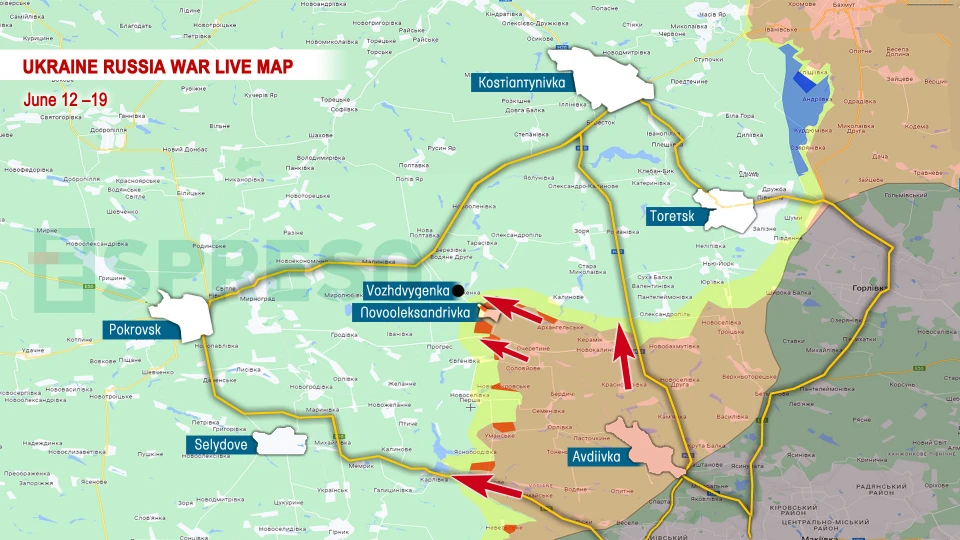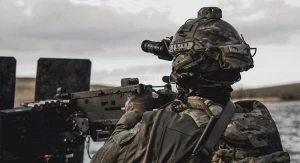
Ukraine's strike on facility in Crimea, ATACMS power, and frontline update. Serhiy Zgurets' column
The first satellite images have been released following the Ukrainian Defense Forces strike on Russia's deep space communications center located near Yevpatoria in the village of Vitine
Ukrainian Armed Forces hit a target near Yevpatoria
There were videos showing powerful explosions at the 40th command center, which Russia has been modernizing since 2014. Such strikes can significantly weaken Russia's intelligence and operational capabilities, particularly in military communications and navigation. Repairing and restoring the damaged infrastructure will require substantial financial and technological resources. Losses among Russian personnel are expected.
It was also reported that Russia had deployed a powerful Krasukha electronic warfare system at the facility to defend against attacks by unmanned aerial vehicles or missile weapons. Local residents indicated that drones attacked the satellite communications center. However, it is highly likely that ATACMS were used. Although the distance from Ukraine's territory is about 300 km.
The use of American-provided weapons on Russian territory
Today, the issue of using American-provided weapons not only on Crimea but also on Russian territory to tactical and operational depths is becoming increasingly significant. Kyiv asserts that foreign weapons should be employed based on both their technical capabilities and battlefield requirements. U.S. officials now state that Ukraine is permitted to use HIMARS against targets in Russia, with restrictions not limited by geography. This includes all areas hosting military targets engaged in active combat operations or preparing for imminent combat.
we can conclude that a considerable number of Russian military facilities and airfields fall outside the range of HIMARS but within the range of ATACMS. For instance, airfields like Baltimore Airfield in Voronezh, 200 kilometers away, are regularly used for SU-34 aircraft launching KABs against Ukrainian territory. Thus, expanding the use of ATACMS is expected to significantly impact the battlefield dynamics, including the potential destruction of S-400 air defense systems.
If Ukraine utilizes ATACMS to neutralize the S-400, it will significantly reduce the S-400's coverage area over Ukrainian and potentially future F-16 aircraft operations. Therefore, expanding and deepening the deployment of ATACMS into Russian territory is crucial. Today, it is an effective way to deplete Russia's offensive potential, destroy its manpower and equipment, and is one of the important factors in ensuring constant high Russian losses.
Frontline situation: Pokrovsk direction
Most of the fighting is currently taking place in the Pokrovsk direction, accounting for a third of the clashes along the entire 940-kilometer-long frontline. The Pokrovsk direction stretches from Karlivka in the south to Novooleksandrivka and Vozdvyzhenka in the north. The Russian army is trying to advance from Ocheretyne in several directions, including Novooleksandrivka with a course to Vozdvyzhenka and the Pokrovsk-Kostiantynivka highway.

The Russian army is trying to operate in the direction of Yevhenivka and in other areas, using the advantage of manpower and equipment. Regarding Novooleksandrivka, initially there were reports from DeepState that Russia had completely captured Novooleksandrivka. Later, there were explanations from the Ukrainian General Staff that Ukrainian troops were actually holding the western part of Novooleksandrivka. But in any case, the situation is extremely difficult. Behind Novooleksandrivka, the heights begin - Vozdvyzhenka, and then the road to which Russia is so eager to advance.
Oleksandr Shyrshyn, deputy commander of the 47th Brigade battalion holding the defense in the Pokrovsk direction, noted the Russian activity near Novooleksandrivka is affecting the situation in the Pokrovsk direction, saying that "Our flanks pass through the area where the Russians are trying to advance. When a flank is blocked, it is much easier to surround a brigade or take up positions there. The situation is not easy, but we continue to work."
According to him, Russian forces can advance from the Pokrovsk-Kostiantynivka highway and still be able to enter Kostiantynivka. Therefore, the issue is not so much about supply as about the threat to other parts of the frontline.
Shyrshyn described the current situation in the 47th Brigade's area of responsibility.
"Active fighting continues. The enemy is storming us with large groups of people. Unfortunately, the enemy has been successful. Despite this, we continue to hold the line. There are nuances we face. The Russians outnumber us, this is obvious. But I think we are fighting the battle quite effectively," he said.
Shyrshyn added that Russia rarely uses armored vehicles. According to captives, there is either no equipment available or it has been depleted. They are hesitant to use it due to concerns about it being targeted and destroyed. Most of their equipment has been reportedly destroyed by Bradley infantry fighting vehicles and FPV drones. Currently, they are primarily using buggies or motorcycles at most.
Russia replenishes after losses quite quickly, says Shyrshyn. Usually, the Russians replace them with new units. "We have already seen (Russian- ed.) units changed several times in this area. Now there is a new regiment. You can see that the first fighters who try to enter are quite aggressive. They manage to advance until they start suffering the first losses. But the occupiers replace them quickly enough, they have enough personnel to make such replacements," he added.
The Ukrainian artillery is working. The issue is that they do not have the number of ammunition they need.
"Despite all these deliveries, signed contracts, and so on, we still do not feel that we have any replenishment. But we have been fighting in this mode for six months and continue to do our best with the available resources," concluded the deputy battalion commander of the 47th Brigade.
- News













































